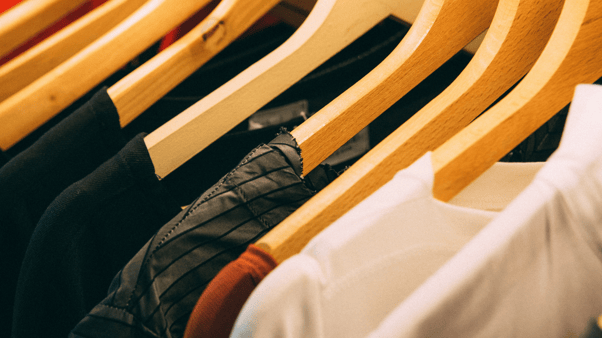
There is no doubt that recent worldwide events have hindered the output of many industries and created very new playing fields for many of them. Similarly, this slowdown has meant some relief for our environment and has shone a light on the importance of changing the way we do things. One such industry is the textile/fashion industry.
Prior to the pandemic, clothing production had almost doubled since the early 2000s with certain clothing companies releasing as many as 24 collections a year – meaning people are buying more clothes to keep up with fashion trends but using them less! Sounds counterproductive doesn’t it. And the consequence of such immediate gratification? A catastrophic impact on water systems, air pollution and landfill airspace.
Did you know the fashion industry is responsible for 10% of the world’s carbon emissions and experts indicate that this figure could more than double by 2030 if something doesn’t give?
Let’s take a look at the dire impact of the fashion (under)world from both a manufacturing and consumer point of view.
Manufacturing:
The fashion industry is the second largest consumer of water, using over 2100 litres of water for the creation of one cotton shirt as a key example, and similarly a substantial contributor to water pollution, with 20% of all industrial water pollution coming from this sector as a result of the dying of clothing - with 90% of this water being released into rivers.
In addition, 60% of garments produced contain micro-plastics where over 500 000 tons of these micro-plastics are released into oceans each year – that’s 50 billion plastic water containers. This is concerning as not only is 3% of the world’s freshwater, with 2% of that locked away in frozen glaciers or unavailable for use, but stats also indicate that 1.1 billion people lack access to water and more than double that are water scarce for a minimum of one month during the year.
The reality? We simply can’t afford to be polluting water – or wasting it – and so the industry needs to find sustainable ways to conserve fresh water and repurpose wastewater – to really start driving change. But it’s not just water, it’s the actual fabric selection that also has a massive impact. Polyester fabrics release almost 3 times more carbon emissions and so, it is critical that responsible sourcing and creation also take centre stage.
Consumers:
It is not just industry though – consumers have a fundamental role to play in mitigating the impact of the fashion industry on the environment. It takes a conscious change of behaviour if we hope to realise a shift and, in fact, this change will automatically encourage the industry to shift too.
High-street fashion trend jumping, throw-away culture, and instant gratification are central to the environmental issues the consumer brings.
In fact, 85% of textiles go to landfill each year globally with one rubbish truck dumped into a landfill every second! And, if we’re not throwing away and being overly compulsive on fashion trends, we are buying cheaper fabrics which in essence last for a shorter period of time and are generally more damaging to the environment.
Therefore, individuals can and should make some changes to their fashion buying behaviour including handing items down as many times as possible before throwing them away, not jumping from one trend to the next – rather buying fewer quality pieces that are timeless and avoiding fabrics that have a large impact on the environment.
And buying local is another great way to mitigate not only the manufacturing impact on the environment but reducing the transportation carbon impact of fashion too. There are many South African businesses that are doing fantastic work in providing the market with responsibly made garments that meet the balance between fashion and timelessness while meeting environmental agendas. In fact, even the likes of Woolworths and Zara have committed to shifting their perspective and product sourcing aligned to this.
The bottom line is that there is hope. If we consider things like the UN Alliance for Sustainable Fashion, the move by bigger retailers to take this seriously and a shifting consumer perspective around what is important and the impact of fashion on the environment, then we can see that we are moving in the right direction.
This, coupled with the fact that COVID-19 has forced the industry to stop Fashion midseason’s and highlight sustainable fashion as a trend, means that we are hopefully heading towards a change in behaviour – both from a manufacturing and consumer buying/wearing perspective.
Download the Intwerwaste calendar and learn how to live on the greener side of life.





SUBMIT YOUR COMMENT